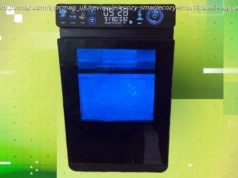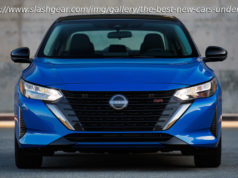We let Amazon’s smart home speaker with a screen live with us for a few weeks. Here’s what we thought.
Update: Amazon Echo Show’s relationship with YouTube has been turbulent at best, but it appears that the streaming app will be leaving once and for all starting on January 1 2018.
Original review continues below…
Technology, as you might’ve noticed, moves fast. It seems like the second you fully understand a product – all of its strengths and weaknesses – the company that makes it goes and releases a sequel.
Such is the case with the Amazon Echo, a first-of-its-kind smart speaker that released back in June 2015, and the new Amazon Echo Show, which just released in June of this year.
The Amazon Echo Show is a completely new take on the smart speaker; one that has its own set of challenges, obstacles and benefits.
That new challenge, in case you missed the memo, is the additional 7-inch touchscreen and 5 megapixel camera that will allow you to interact with Alexa, the Amazon Echo Show’s built-in assistant, in wholly novel and unique ways.
Some of those ways will markedly improve your quality of life – you can summon visually rich recipes with just a few words or see lyrics for your favorite songs, for example – while others will undoubtedly frustrate you.
This is a repeat of the huge problem we had with the original Echo: Alexa is smart, but it’s still so limited. Commands that should be relatively simple to parse befuddle the ‘smart’ speaker. Even now, months after launch, things still aren’t where they could be.
Alexa isn’t the perfect assistant but it’s still evolving, and before you judge a book by its first few pages we invite you to take a ride with us as we uncover what it’s like to use the Amazon Echo Show every day for three months.
Unlike the uniquely obelisk-esque Amazon Echo, the Echo Show is made to fit any environment – its subtle black frame can blend into corners of your kitchen, living room or bedroom without attracting any attention to itself.
What gives the Echo Show away is the glowing screen that lights up when you enter the room. The screen usually offers small tips on how to better use Alexa or prompts you to ask it about a trending news story. Ask Alexa to show you the story and not only will the smart speaker read it to you, but it will also display the text so you can follow along.
Should you decide to eschew privacy concerns entirely and keep your Amazon Echo Show in your bedroom, the Show does have a Do Not Disturb function that darkens the screen and allows you to sleep without the Show’s bright light keeping you up.
The 7-inch touchscreen is, well, tiny – especially if you’re the kind of person who spends most of their days lounging in front of 65-inch TVs or gaming on 32-inch monitors. The size of the screen will likely deter you from watching full movies on the Echo Show (though it does have access to Amazon Prime’s catalogue of content if you should choose to watch it) but it’s just large enough for you to see relevant information.
Speaking of ‘just enough’, this is as good a time as any to talk about the front-facing speaker.
One huge problem we had with the original Amazon Echo was that its speaker – you know, the thing that comprised 50% of the product – sounded really subpar compared to the other Bluetooth speakers on the market at the time. For whatever else hasn’t been fixed with Alexa as an artificial intelligence, at least the speaker has been significantly improved: It’s still shallow, harsh and can be underwhelming when challenged face-to-face with another speaker in its weight class but all things considered the speaker here gets the job done.
The magic of the Amazon Echo Show happens with its far-field microphone array that’s located at the top of the speaker, encircling the volume up/down and microphone on/off buttons. It can hear you over the sound of a conversation or your blaring music. Words can be misheard or misinterpreted from time-to-time, but rarely do I feel like it’s the microphone array’s fault. It is, for the time being, Amazon’s real secret sauce.
The setup process, especially for those of us with an Amazon device already in the house, should go smoothly and quickly. Connect the device to the Alexa app on your phone via Wi-Fi, and you’ll be off to the races.
So, where does the Amazon Echo Show go? The living room? Does it belong in the kitchen? Should it sit on your nightstand and watch you while you sleep?
This is a matter of preference honestly, and while we can’t see everyone rushing to put a camera-equipped smart speaker in their bedrooms, the Echo Show is versatile enough to be in any room and remain relatively helpful.
For us, the Show’s place was in the kitchen, as that’s where it truly shined.
But why choose the kitchen? What exactly makes Alexa a better kitchen aid than a living room companion? It’s a combination of the Echo Show’s skill set and personal preference.
Walking into the kitchen in the morning to make ourselves a cup of tea, it was nice seeing a fresh news story loaded onto the screen. We could get news briefings from NPR and ESPN while pouring the milk into a bowl of cereal, and ask what the commute would be like before running out the door. We’d come home, look up a recipe using some ingredients we’d have on hand, set the cooking mood with some old school R&B and ask Alexa to mind the timers.
Now sure, Alexa could’ve worked just as well on the nightstand as it did out in the kitchen, and our iPhone SE is just as capable of setting timers and the mood for cooking, but there was something undeniably attractive about having it all rolled into one device.
But everything we’ve mentioned up to this point is only a small portion of what the Amazon Echo Show can do – not only is it a competent DJ and cookbook, but it can also take on the roles of a smart home hub, pizza delivery and Uber calling service, a game show host and myriad other fun, quirky titles.
It can do this thanks to third-party applications – community built software that expands on Amazon’s groundwork. There are thousands of these skills available for the Amazon family of devices, and while they’re not all winners, there’s plenty to experience if you’re willing to dive deep into the marketplace.
But let’s focus as Alexa as a smart home assistant, as that’s where you’ll likely use it the most. Setting up smart home products with your Echo Show will be game-changing. Having the ability to control your lights with your voice or adjusting the thermostat without leaving the couch will make you feel like you are living in the future. The Echo Show will link in with Nest, Netatmo, Philips Hue, SmartThings and Honeywell products, as well as with other Amazon Echo devices. Use the app to group speakers together (say, two speakers located on the upstairs of your house) and you’ll have a functioning multi-room speaker setup that rivals industry leaders like Sonos.
When you do choose a Skill, however, there are some inconsistencies with how you ask Alexa for that particular information. For instance, once we set up Hive to work with Alexa, we never had to ask Alexa to launch Hive, just say things like: “Alexa, dim the dining room lights 50%”. That would dim the lights no problem.
But, when it came to asking for something like travel information, we had to launch the app you’d like to use via its name and then ask about your commute using language specific to that app. This adds a bit of a barrier that makes the experience less than seamless.
Up until now, we haven’t spent much time talking about the 5MP camera – partly because it’s a sensitive subject for most folks and partly because even Amazon hasn’t fully figured out how to utilize the technology to the best of its ability.
The obvious application for the front-facing camera is for video calling – allowing friends and family to see you from wherever they are in the world. It’s an ambitious goal and one that – on a very basic level – the Amazon Echo Show achieves. Should you choose to enable the feature, select friends and family can ‘drop in’ on you at any point in time. They can pop in for a brief chat to check in with you and then pop out when they’ve said all they’ve needed to say. It’s less formal than a proper video call and, when used sparingly, feels fun and neat.
But the limitation here is that, for Drop In to work, the other person needs to have an Amazon Echo Show as well. Which… right now, seems unlikely.
Of course, if video isn’t all that important to you, you can use regular voice calling in the US, Canada and Mexico free of charge.
This will not only work from Alexa-to-Alexa devices, but also to any landline or mobile number as well. There’s no charge for using the feature and your friends will still see your name and contact info when you call.






